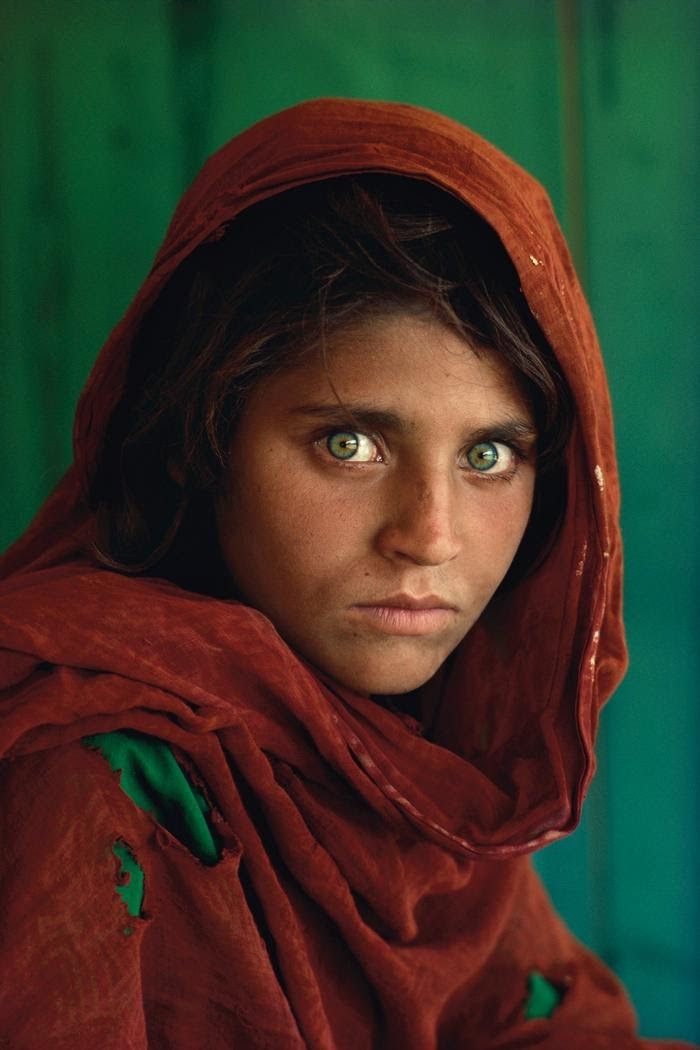
Everyone loves a good story, and your skills in storytelling for nonprofits can make the difference between getting big bucks and donation requests that fall flat.
The good news is that great stories are all around you.
EVERY nonprofit has stories to tell!
And you don’t need to be a professional writer to craft them.
Once you understand the basic elements of a good story and a few different ways to tell them, the rest is just practice, practice, practice.
Why You Need a Good Story
Strong, effective storytelling for nonprofits can accomplish lots of good things:
- Connects your audience to those you serve
- Allows your audience to get to know you a little better through the stories you tell
- Explains the need in an emotionally-driven way
- Draws your readers in and makes them invested in the outcome
- Reinforces your brand and your mission
- Inspires potential donors to give
What a great bunch of benefits, right?
In short, great storytelling tugs heartstrings, and that’s Step #1 if you want a donation.
What Makes a Good Story?
There are some universal elements to any compelling story, whether they’re in books, the news, articles, blogs, or movies.
Let’s construct our own (fictional) story as we go, and we’ll use five elements to show you how to put these things into play!
 1. Setting: This is where your story happens. On the street, in a shelter, in a school, in a foreign country.
1. Setting: This is where your story happens. On the street, in a shelter, in a school, in a foreign country.
For the purposes of our exercise, let’s say our story takes place in India.
2. Characters: Every story needs a hero, and it’s probably someone you serve.
Are you telling a story about one particular recipient or a general segment of a population? (Hint: it’s very helpful if you can make your “character” a specific person/animal or small group of people/animals that you can attach names to).
For our story, our character is a child named Fatima and her parents, Priya and Amit.
Photos or a video of your characters are HIGHLY recommended. In fact, they’re almost necessary, but more on that later.
3. Plot/Desire: In any good story, there’s a problem that becomes part of the plot of the story.
And the hero has a desire to overcome that problem. What is happening in your hero’s life? What circumstances or situation are you trying to educate your followers about?
For our fictitious story, the plot is: Many children only eat one meal a day – dinner. Schools do not provide meals, and families are very poor. Unfortunately, many children do not perform well in school.
4. Conflict: Don’t let this word fool you. Conflict isn’t a disagreement or dramatic scene.
For nonprofit storytelling, conflict really refers to the challenges that need to be overcome or maybe the circumstances that perpetuate the problem.
Take our plot: many children eat one meal a day and do poorly in school.
So in this case, the conflict would be: This family is very poor, and both parents have to work very early in the morning. School provides no breakfast or lunch. Fatima is doing very poorly in school because she has no energy, and she is not consuming enough calories to keep her mind sharp. There is no money, there are no resources, and the situation is only getting worse.
5. Resolution: The resolution describes what needs to be done to reduce the conflict. What are you planning to do to help alleviate the conflict and help the hero overcome the problem? What is needed to make this better?
In our story, the resolution would be raising enough funds to provide every school child with a nutritional breakfast and lunch.
If you can use your Core Number to share what it costs to feed that child lunch, even better!
Now, let’s build a story using our five elements:
In a small village in India, 9 year-old Fatima lives in a tiny hut with her parents, Priya and Amit. (Large, beautiful photos of the family, perhaps in front of their humble home).
Her father, Amit, is a construction worker, and Priya is a seamstress at a factory.
Amit and Priya both leave for work very early in the morning, so Fatima is on her own to get ready for school.
Sometimes she only has a cup of tea in the morning because that’s all they can afford, and that’s only if she doesn’t oversleep or if she remembers!
Fatima is very sluggish at school.
She’s not turning in her assignments.
She’s ashamed of herself because she knows she’s smart.
After school, she goes home, instead of playing outside with her friends, because she’s always so tired
She usually sleeps until her parents come home – where Priya makes a small, modest dinner for the family.
After dinner, Fatima goes back to sleep
The next morning she wakes up, and the whole cycle begins again.
Our program offers school breakfasts and lunch at no cost for every child in the school. And the results speak for themselves.
Kids who are eating regular, nutritious meals are performing better in school, engaging in more social activities, and making more friends.
They’re just overall happier children, and their success at school sets them up for success later in life!
Parents report much more engagement and conversation with their kids at home, and this all leads to a stronger family unit!
Who would have thought a simple meal could change a family’s life?
Your donation of $7.32 will provide school breakfast and lunch for Fatima or another deserving child for one week.
Please give so that we can end childhood hunger in India and help these children realize their full potential.
Did you recognize the five elements in our story? Once you understand these five elements, you’ll be able to pick them out in TV shows, movies, books, and news articles.
Use Normal Language in Your Story
 A long, drawn-out, flat story with a bunch of numbers and statistics and jargon is not a good way to convey your message and your needs.
A long, drawn-out, flat story with a bunch of numbers and statistics and jargon is not a good way to convey your message and your needs.
It’s boring to the donor and doesn’t inspire them to give.
Plus, a bunch of theory and stats are not a story – that’s a report.
And while there are times and places for these reports, storytelling for nonprofits to raise funds is not the time or the place.
Here are two different examples for the same fundraising Ask. Which one would inspire YOU to give?
Version 1:
By providing financial support to our efforts, you can help impact families affected by domestic violence.
Our goal is to expand our shelter so that we can help more women and children who need an emergency place to stay.
We have a 74% success rate helping these families find permanent housing, and 62% of the women in our program end up being able to go to school.
A donation from you will help us meet this goal and continue to help families in crisis.
Version 2:
A shelter can be a scary place.
But for the 42 women and 18 children who have come through our doors so far this year, the shelter is a safe haven.
Inside these walls, 28 women have found the courage to start school to prepare themselves for the future and change their lives so they never have to go back to their abuser.
Our new playground equipment has turned our backyard into an oasis of fun for our resident kids to play and just be a kid.
For all of those in our care, they’re getting the support they need – but dozens more women need a safe space to flee to.
With your help, we can expand our shelter so that we can provide these life-changing services to more deserving families.
Your gift today will help us purchase supplies and materials to increase our capacity by adding 6 bedrooms and updating our much-loved, but very outdated, kitchen.
Please give today and help us to provide a true home setting for these families in transition.
Your Story: The Sequel
 People love updates!
People love updates!
So, always continue your story.
Studies show that fundraising campaigns with regular updates can raise up to 138% more funds than those without updates!
You can update on:
- milestones – We are 25% of the way there!
- statuses – Update: Fatima now has breakfast and lunch lined up for a month!
- any other news that helps bring your donors into the story
Don’t Forget to Ask
This seems silly to say, but one of the largest challenges to overcome in fundraising is your mindset.
You need to become comfortable asking people for help in supporting your cause.
Remember, you’re not begging. You’re connecting people with causes they care about.
Your nonprofit is simply the conduit to allow people to change lives.
You’re changing the world, and donors are your partners in doing that. By asking, you’re giving your donors the opportunity to be heroes.
When you don’t ask, you basically deny people the opportunity to change someone’s life.
Plus, if you don’t ask, people may not know you need funds.
Don’t forget to ASK!
Pictures and Videos Can be Worth $1,000
They can also be worth a thousand words.
Photos and videos are crucial to the success of your story.
Your audience can’t connect strongly with just a bunch of words on a screen. They can’t place themselves into your story just by reading.
SHOW them. Show them who, where, why.
 Don’t fall into the trap of thinking you need to have high-resolution professional quality photos or professionally edited videos.
Don’t fall into the trap of thinking you need to have high-resolution professional quality photos or professionally edited videos.
While those are great, they aren’t always necessary.
Some of the most compelling images and videos are snapped in an instant on a smartphone.
Potential donors love to see the real deal – your organization in action on the ground and the beneficiaries of your services.
People give to things with “eyes and teeth.”
If you’re raising funds for equipment, supplies, vehicles, etc., you can give those items eyes and teeth by telling the story from the perspective of someone who will benefit from this piece of equipment or vehicle.
Remember, it’s not about the equipment, supplies, vehicle, or facility you need funds for. It’s what those MAKE POSSIBLE.
A strong and well-placed photo can immediately draw your readers in.
The first thing your readers should see is an image that makes them want to know the story behind it.
Here’s a great example of one such photo. It’s one of the most iconic photos in history, and it’s that way for a reason.
Look at her eyes. It feels like you can see her soul.
You’re immediately captivated, and you WANT to know the story behind this photo.

Photos and videos make a huge difference in storytelling for nonprofits.
They prove that you’re doing what you say you’ll do, or they convey the need you’re trying to fill.
One good photo can replace a whole page of text.
Videos are amazing and powerful tools as well.
You’ll want to keep your videos short — under three minutes, if possible (the exception is live videos).
People just don’t have an attention span for anything much longer, so it’s important to keep it short to get the most from your fundraising videos.
If you are producing a video (rather than just filming things onsite), prepare an engaging script or captions.
If it’s a captioned/narrated video, the background music is very important. Just as in movie scores, the music can set the tone and enforce the message.
A note about music: Do NOT use licensed music without permission. There are many sites that offer free, royalty-free music for videos, in all sorts of genres, that generate all sorts of moods. A few I can recommend:
- CapCut: https://www.capcut.com/
- Mixkit: https://mixkit.co/
- Free Music Archive: https://freemusicarchive.org/
- YouTube also has its own audio library offered free of charge. When you log into your YouTube account, you can search for it there!
So, What’s Your Story?

Using the techniques of storytelling for nonprofits can make a huge difference in the results of your fundraising.
Pay attention to how other nonprofits are telling their story, and which ones pull your heart.
You can learn a lot from a few good examples of stories used in fundraising.
So start thinking about what story in your nonprofit you can tell.
Does anything come to mind immediately?
I’m willing to bet you can think of at least three great stories to tell right now.
Let your passion and commitment come through, be authentic, and let the story unfold.
It will tell itself if you give it just a little help!






Leave A Comment